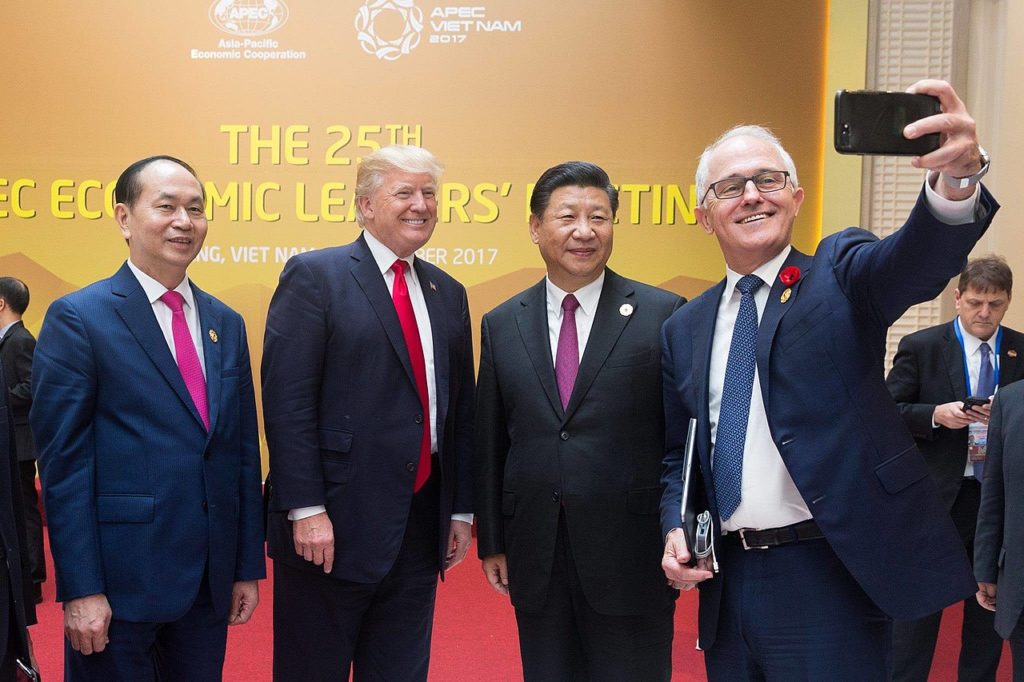President Trump last week announced that the U.S. will impose 25% tariffs on about $50 billion worth of Chinese imports, to punish China for its “systematic theft” of U.S. intellectual property and/or to reduce America’s trade deficit with China. China fired back by announcing it would impose 25% tariffs on about $50 billion worth of U.S exports to China.
Here are the two lists of Chinese products the U.S. has targeted, primarily machinery and industrial parts from industries such as aerospace, robotics, automotive, industrial machinery, and information and communications technology. These 1,102 product lines theoretically benefit from the Chinese government’s “Made In China 2025” industrial plan to become a global leader in certain new and advanced technology industries.
China also issued two lists targeting U.S. products ranging from salmon to soybeans, Harley Davidsons to electric cars, orange juice to whiskey. China’s first list targets 545 product categories covering about $34 billion in U.S. exports to China and its second list targets another 114 product categories covering about $16 billion.
July 6 is currently the deadline for when China and the U.S. will impose the proposed tariffs on the first list of imported products. Given President Trump’s history of flip-flopping on China trade issues, it is not clear whether these tariffs on Chinese imports will actually be imposed.
What can and should U.S. companies do if they are caught in the cross-fire of this escalating trade war, either because they import goods from China that will be subject to U.S. tariffs or because they exporting U.S. goods to China that will be subject to Chinese tariffs?
For the U.S. tariffs, U.S. companies likely will be able to request specific products be excluded from the tariffs on Chinese products. This process likely will be similar to the exclusion request process used for the recently imposed “national security” tariffs on steel (25% tariffs) and aluminum (10% tariffs). In the past few months, the U.S. Department of Commerce has been flooded with nearly 20,000 requests to have products excluded from these tariffs. Separate requests must be submitted for each product a company wants excluded.
An exclusion request typically includes the following:
1. Identify the product you want excluded. The U.S. list of targeted products is identified by the Harmonized Tariff Schedule (HTS) number that is used to declare the product when imported into the United States. A company needs to identify the commercial name of the product, the HTS number for the product, and any other industry designation of the product under a recognized standard or certification (for example: ASTM, DIN).
2. A description of the product based on physical characteristics (for example: chemical composition, metallurgical properties, dimensions) so your product can be distinguished from other products that would still be covered by the tariffs. A significant concern in considering exclusion requests is whether granting a specific exclusion request will create a loophole many other products can also use.
3. The basis for requesting an exclusion. Is the steel/aluminum/other product unavailable from a domestic U.S. supplier and thus imports are needed to fill a demand no U.S. supplier can fill. Are there certain qualification requirements only the import supplier can satisfy? Have you been put on allocation by domestic suppliers?
4. The names and locations of any producers of the product in the United States and in foreign countries.
5. Total U.S. consumption of the product by quantity and value for each year for the past three to five years (2013 – 2017) and projected annual consumption for the next few years (2018- 2020), with an explanation of the basis for the projection.
6. Total U.S. production of the product (or possible substitutes) for each of the past three to five years.
7. Discussion of why the U.S. products (or substitute products) cannot be used in place of the imported products.
8. A good story why your company deserves the exclusion it is requesting. This typically includes the history of your company (e.g., fifth generation family-owned), the products produced by your company, the strategic significance of your company’s products, the number of workers in your company, and your company’s annual sales.
U.S companies exporting to China likely will have a similar process to try to get their products excluded from the Chinese tariffs. The Chinese exclusion process will likely not be as formalized as the U.S. process, but it likely will require a Chinese company to submit the exclusion request and to provide the above listed items to explain why the U.S. products deserve to be exempted from the tariffs.
A U.S. exclusion process will likely proceed fairly slowly because there are so many exclusion requests already in the pipeline for the steel and aluminum tariffs, though a successful exclusion request likely will result in a refund of any tariffs paid. Waiting for a tariff refund is not the best thing in the world, but requesting such a refund will be the best path for many.

























